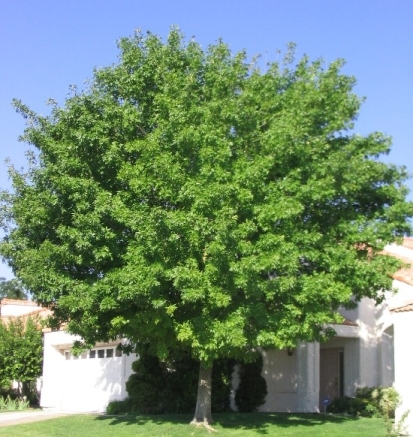A
Green Mindset can add value, beauty and save you $$$
 When thinking of upcoming St. Patrick's Day what
color comes to mind? Obviously green right? For most of us that particular date
is also when we are beginning to see the early signs that spring has officially
arrived! The time of year to reclaim our gardens and landscapes from the winter
shades of browns and grays.
When thinking of upcoming St. Patrick's Day what
color comes to mind? Obviously green right? For most of us that particular date
is also when we are beginning to see the early signs that spring has officially
arrived! The time of year to reclaim our gardens and landscapes from the winter
shades of browns and grays.
St. Patrick's day can be the ideal time for us all
to be thinking "Green"! For all those who enjoy being outdoors
whether you are a gardener, hiker, biker or pro landscaper my me just the site
of that fresh color green can be invigorating to senses and a harbinger of
sunnier days ahead!
Plan on investing some time now on "green"
improvements to your landscaping and lawn and as a homeowner you will reap a
host of benefits both short and long term. There are so many ways that
"green" can improve the environment and enhance lives. Here are just
a few..
Green can greatly improve allergy reduction, a
thick, lush dense turf can crowd out all those weeds therefore reducing pollen
in our air. A mighty big relief to allergy sufferers out there.
 Green can help create cleaner water, when your turf
is thick and healthy it acts like a filter, cleaning water as it absorbed into
the soil and plants root zone area reducing the likelihood of groundwater
pollution.
Green can help create cleaner water, when your turf
is thick and healthy it acts like a filter, cleaning water as it absorbed into
the soil and plants root zone area reducing the likelihood of groundwater
pollution.
Did you know that a healthy patch of lawn as small
as just 50 sq. feet can produce enough oxygen for a family of four??
Did you know that "green" can help reduce
our energy costs? The proper placement and maintenance for trees for shade and
shelter can reduce your attic temperatures up to 40 degrees in the summer and
help reduce heat loss in the winter.
Did you "green " is one of the best ways
to add to your property value? Studies continually show that investment in
landscaping improvements can be more than recovered when a property is sold or
even add more profit when attention is
paid to plant size, placement and a well thought out design?
So you may want to raise your glass to the old St.
Patrick, it's not just wearing the green it's THINKING AND ACTING on the
"green" that can make a real difference for you!
Question:
Jimmie,
I installed a thick layer of mulch over my perennials late fall to protect the
roots from winter. Will they push up through this mulch this spring? Thank you
for your time! Vicky K. in Prosper
Answer: Hi Vicky, While perennials sometimes will successfully break through a thick layer of
mulch, other times damage will result. Don't take a chance with the health of
your perennial flowers! In late winter or early spring (depending on the weather) you should begin checking to see whether the ground is thawing or not. If the ground is thawing, leaving landscaping mulch on top of your perennial flowers can smother them -- so it is time to remove the mulch, to let your perennials breathe.
Once the perennial flowers have pushed up (so that you know where they are) and have achieved a bit of height, then you can re-apply mulch around them to suppress weeds.
Question: Jimmie, Is there a general rule of thumb for when to prune flowering shrubs? I know your super busy so I appreciate your time! Susan P. in Prosper
Answer: Hi Susan, To answer the question of when to prune
flowering shrubs, we must first determine the reason behind the pruning. Do you
wish to rejuvenate overgrown, neglected bushes through pruning? Or is this to
be merely a routine pruning to maintain the flowering shrubs within certain
dimensions?
We sometimes
wish to prune flowering shrubs in order to shape them or keep them within
certain bounds. But we worry that we'll miss out on this year's blossoms if we
prune at the incorrect time. Here's the general rule of thumb to know when to
prune a particular plant.
If you are undertaking a routine pruning, observe the shrubs' blooming habits. For shrubs that bloom in summer or fall on the current year's growth, such as beautyberry , prune in late winter or early spring. For shrubs that bloom in spring on last year's growth like a forsythia, prune after their blooms begin to die.
If you are pruning flowering shrubs to rejuvenate them, the best time to prune is late winter or early spring. True, pruning early-flowering shrubs at this time will reduce or eliminate blossoming in spring that year, but the trade-off is in gaining healthier, more vigorous flowering shrubs for the long run. Until next time ...Happy Gardening!!
If you are undertaking a routine pruning, observe the shrubs' blooming habits. For shrubs that bloom in summer or fall on the current year's growth, such as beautyberry , prune in late winter or early spring. For shrubs that bloom in spring on last year's growth like a forsythia, prune after their blooms begin to die.
If you are pruning flowering shrubs to rejuvenate them, the best time to prune is late winter or early spring. True, pruning early-flowering shrubs at this time will reduce or eliminate blossoming in spring that year, but the trade-off is in gaining healthier, more vigorous flowering shrubs for the long run. Until next time ...Happy Gardening!!
Jimmie

No comments:
Post a Comment